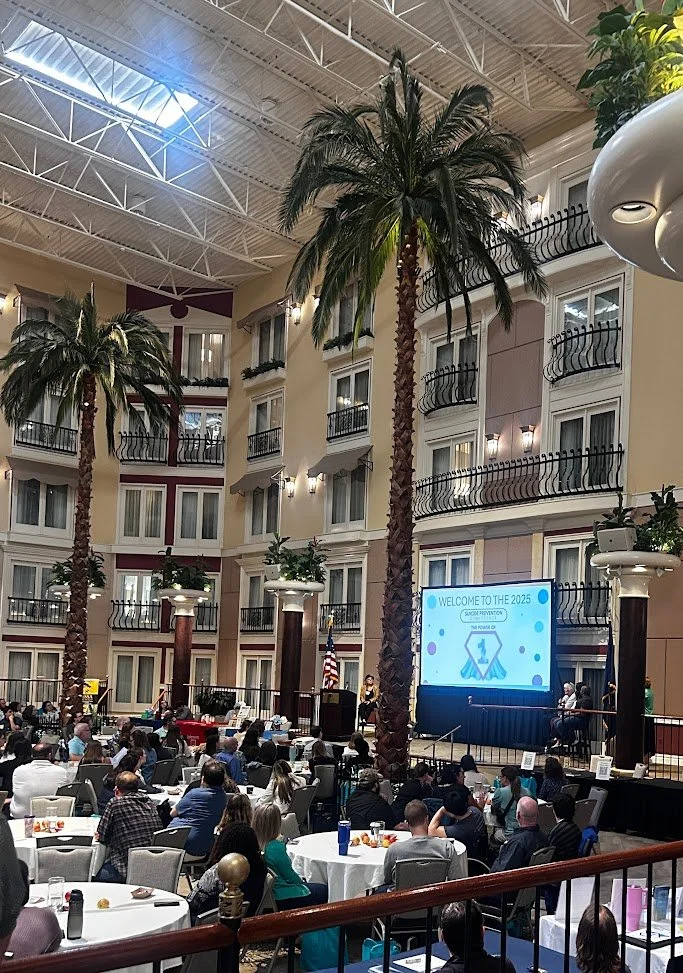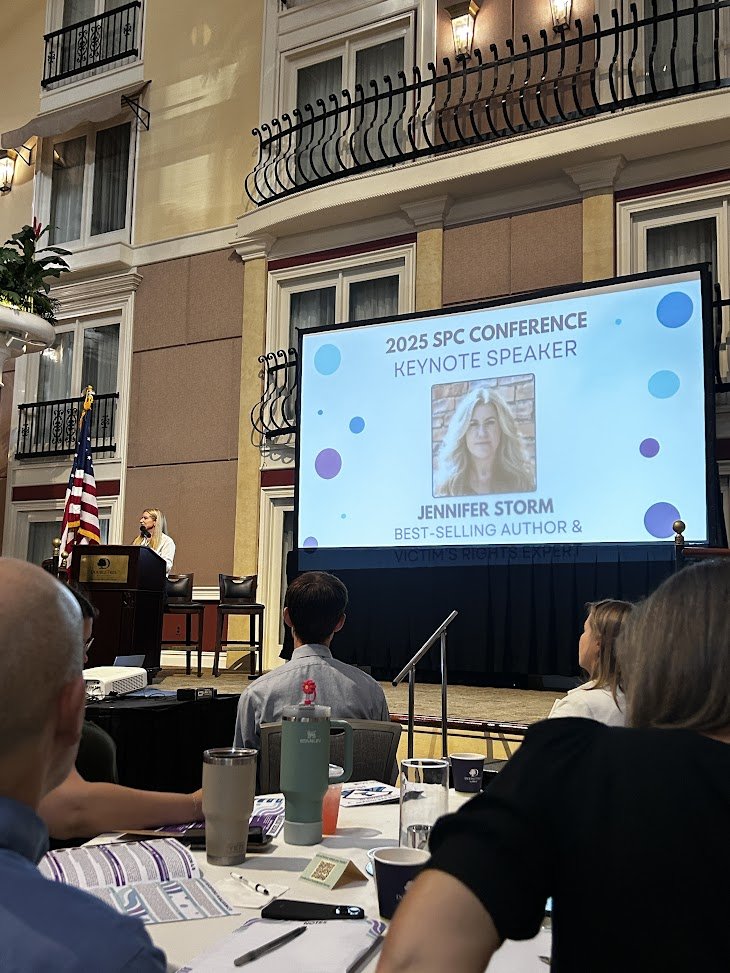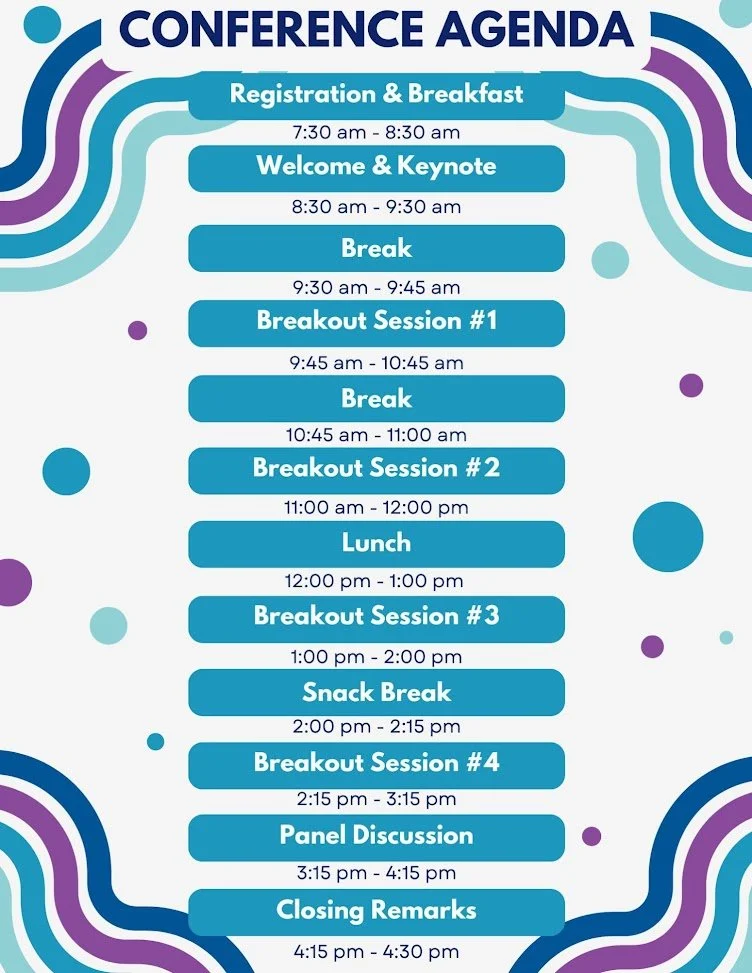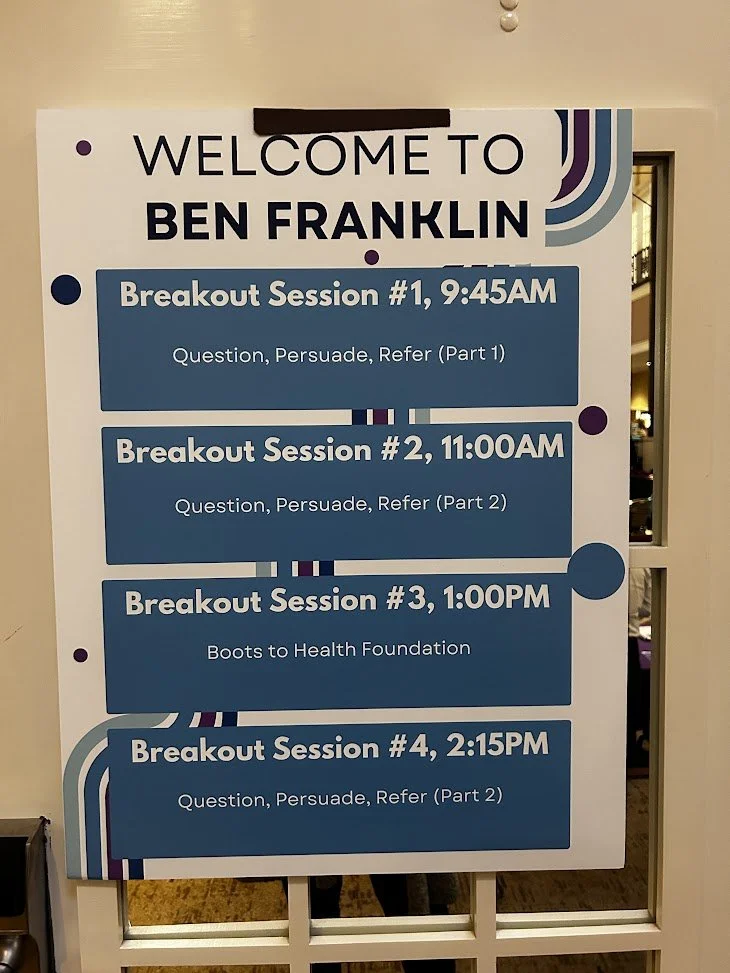MHA Lancaster Suicide Prevention Conference
Suicide Prevention Conference 2025 at Double Tree Hilton Lancaster
This month I set out to attend four events for Suicide Prevention Month.
I only made it to two: the book release and author discussion hosted by Touchstone Foundation at the Lancaster Public Library (read my recap), and today’s Suicide Prevention Conference, hosted by MHA Lancaster.
The day was structured into a welcome and keynote, four sets of breakout sessions, and a final panel. The theme of the day was Power of One, but my main takeaway was: plant a seed.
We began with 64 seconds of silence to honor the 64 lives lost to suicide in Lancaster this year before moving into the keynote, the first of two lived-experience sessions I attended.
Lived Experience 1: Jennifer Storm
The keynote speaker, Jennifer Storm, shared her personal journey through sexual violence, substance use, and multiple suicide attempts (watch her TEDx talk), all documented in her book Blackout Girl: Tracing My Scars from Addiction and Sexual Assault.
She described trauma as “too much, too soon, too fast” and highlighted the toll of both complex and vicarious trauma.
Some of her coping tools/recommendations include:
Breathwork (diaphragmatic breathing)
Movement (walking, dancing, stretching)
Body scans (relax jaw, shoulders, release tension)
Journaling/writing
Support “buckets”: emotional support, hobbies, guidance, 12-step/peer groups
Seeing relapse as feedback, not failure
Treating recovery as a muscle that strengthens with practice
She currently works as a victim advocate, and today she reminded us of two things
that survivor voices must be heard, and heard accurately.
we should be seed planters, we may never see the fruit, but your seeds can grow into hope.
Lived Experience 2: Georgina “Georgie” Staley
The second lived experience session was breakout session led by Georgie Staley, a former probation officer now with a local mental health agency. She spoke about the weight of hiding her own mental health struggles while working in probation and how she moved to her current job.
Some of her tools/recommendations include:
Setting boundaries — choosing where and with whom to share.
Motivational listening (MINT).
CBT and DBT for balancing emotional urges.
Radical acceptance and radical questioning.
Through out her talk, she recommended books that support mental health advocacy and resilience:
You according to them by Sara Canaday
Contagious You by Anese Cavanaugh
The Art of Being Broken by Kevin Hines (a prominent voice in US suicide prevention circles - best known for surviving a suicide attempt by jumping from the Golden Gate Bridge in 2000.
Thinking, Fast and Slow by Daniel Kahneman
Furiously Happy: A Funny Book About Horrible Things by Jenny Lawson
Suicide Prevention: QPR and Beyond
Another highlight for me was completing a two-part QPR training. It is the suicide prevention equivalent to CPR, and equips everyday people to intervene and connect others to care.
The QPR steps are simple, but life-saving:
Question (directly or indirectly): “Are you thinking about killing yourself?”
Persuade: Find hooks (pets, kids, art, goals) that keep hope alive.
Refer: Connect to professional help. If you can’t do it, find someone who can.
(Pro tip: keep a mental health directory handy when referring. If you or someone you know needs help, please visit our Crisis Support Directory to find a helpline near you.
Key takeaways from the training:
Good Samaritan laws protect people who intervene in good faith.
Language matters: say “died by suicide”, not “committed suicide.”
Myths & facts: asking someone about suicide does not “put the idea in their head.”
Warning signs range from direct statements (“I want to die”) to situational stressors like job loss, illness, or feeling like a burden.
Data snapshot
U.S. suicides: 30,000 (2005) to 50,000 (2023), with a dip during COVID.
Most deaths occur in rural and remote regions, far from mental health resources.
Globally: 3rd leading cause of death among ages 15–29.
Men die by suicide 3.8x more often; women attempt 3x more often.
Pennsylvania data: middle school suicide attempts are rising.
These statistics remind us why suicide prevention resources are so critical.
College Mental Health: Planting Seeds Early
The last breakout I would like to share was focused on college mental health, an age group where suicide is the second leading cause of death. According to American Association of Suicidology (AAS), 1,100 students die by suicide each year.
Early prevention is a form of seed planting that equips students before crisis escalates.
Ways the presenter do this:
Peer-to-peer education and clubs.
Mass screenings (PHQ-9, GAD-7) to normalize mental health check-ins.
Collaborations with community mental health providers.
Closing Reflections
The closing panel incorporated community voices, with two faith leaders speaking about their work on the frontlines when there is a crisis in the community.
Clearly everyone is a stakeholder when it comes to prevention.
And though we cannot save everyone, we can surely plant seeds. If each of us plants just one seed, we can definitely prevent many deaths.
At MMMF, we plant seeds by sharing highlights from the spaces we participate in (look for a QPR training near you), adding resources to our directory (so that Africans have access to support wherever they are across the globe), and opportunities on our plug page (for resources to help you grow in the mental health field).
Side Note: In my earlier post about events I hoped to attend, I mentioned I’d be on the look out for conversations on AI and suicide. They didn’t appear in the sessions I attended, perhaps next year’s theme will address dig into this, plus we will definitely have more data on this emerging area.
Sending love and light,
Sitawa


























